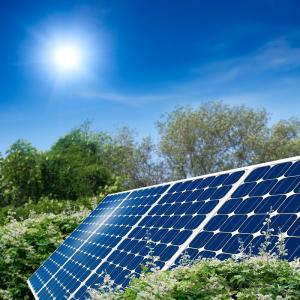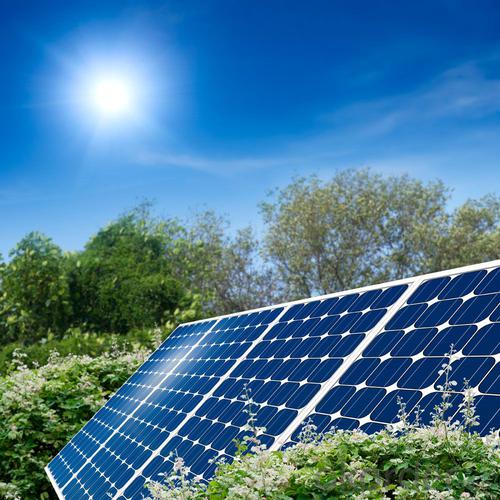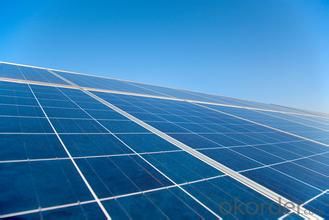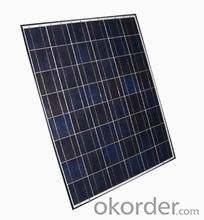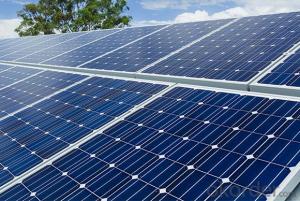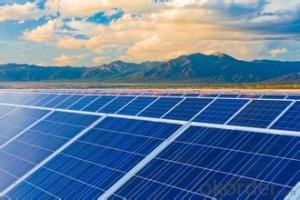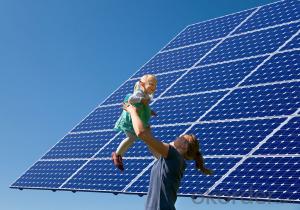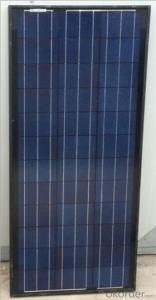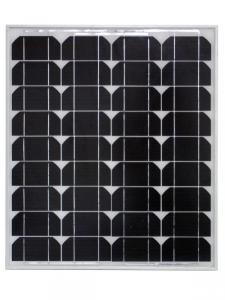Solar Panels Ireland Prices - Polycrystalline Silicon AM245P-6-60 Solar Module
- Loading Port:
- Shanghai
- Payment Terms:
- TT OR LC
- Min Order Qty:
- 200000 watt
- Supply Capability:
- 1000000 watt/month
OKorder Service Pledge
OKorder Financial Service
You Might Also Like
About us
A&M Solar photovoltaic (PV)module is designed for large electrical power requirements. It is the optimal choice for both on-grid and off-grid power systems. A&M Solar panel offers high performance of power per square foot of solar array.Poly- or multicrystalline silicon(poly-Si or mc-Si): made from cast square ingots — large blocks of molten silicon carefully cooled and solidified. Poly-Si cells are less expensive to produce than single crystal silicon cells, but are less efficient. US DOE data shows that there were a higher number of multicrystalline sales than monocrystalline silicon sales.
Characteristics of Polycrystalline Silicon Solar Panel
I Solar Cell : High efficiency crystalline solar cell. Even if under the weak light, the solar module can produce maximum power output.
II Tempered glass (toughened glass): Anti-reflecting coating and high transmission rate glass increase the power output and mechanical strength of solar module.
III EVA and TPT: Using high quality EVA and TPT to prevent destroying and water.
IV AI frame: Without screw, corner connection. 6 holes on the frame can be installed easily.
V Junction box: Multi function junction box with water proof.
VI Long lifetime: ≥25 years; Less power decrease.
VII Good performance of preventing from atrocious weather such as wind and hails.
VIII Resisting moisture and etching effectively, not effected by geology.
IX The certificate issued by international authority: UL, TUV, IEC, VDE, CE.
Standard Test Conditions of Polycrystalline Silicon Solar Panel
The opto-electrical specifications shown below are stabilized values being measured at Standard Test Conditions of multicrystalline silicon Solar Panel, Irradiance: 1000W/m2, Spectrum: AM1.5 at 25°C, The info below is subject to manufacturing tolerances. Where appropriate minutes of measurement are available and are used for the dimensioning of the installation.
Advantages of Polycrystalline Silicon Solar Panel
• A&M Solar performance guarantees for 25 years
• 12 years guarantee for workmanship for multicrystalline silicon Solar Panel
• Timeliness of delivery
• Quality Products certified (TÜV, UL, CE, VDE, ISO)
A&M Solar is committed to meet human’s huge demands for the low cost, high efficient green and renewable energy, providing green power to human development with advanced solar technology and create our green life.
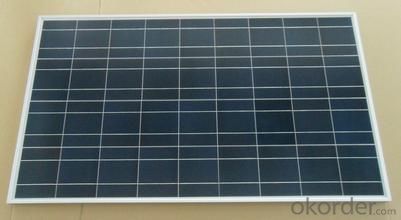
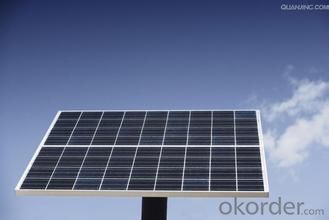
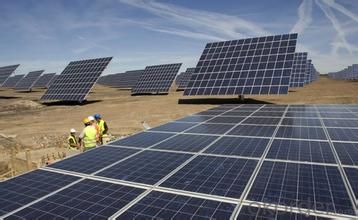
Data sheet
| Maximum Power | 245 |
| Efficiency | 0.151 |
| Backsheet | White |
| Frame Color | Silver |
| Manufacture Site | China |
| Frame | Anodized Aluminum Alloy |
| Weight | 19 kg |
- Q: I thinking of buying a few solar panels, can anyone who had bought solar panels or sells them give me a price for them. I dot wanna over spend on them...
- On OKorder, they seem to be priced around $400. You do realize it takes more than just the panels...
- Q: Can solar panels be used to power a gas station?
- Yes, solar panels can be used to power a gas station. Solar energy can be harnessed through the installation of solar panels on the roof or in the vicinity of the gas station. This renewable energy source can then be used to power various operations and equipment at the gas station, reducing reliance on non-renewable energy sources and lowering overall operational costs.
- Q: Making a solar panelI know there was a recommended wattage for the soldering iron but i cant rememberdoes anyone know?
- Temperature controlled soldering irons like Weller are best. They don't burn up if left turned on.
- Q: How much would solar panels cost for: A Cell phoneA average houseA car
- They would cost quite a bit but the user would likely be eligible for some energy credits from the power company and their cell phone carrier which would bring down the costs
- Q: Can solar panels be installed on airports?
- Yes, solar panels can be installed on airports. In fact, many airports around the world have already adopted solar power systems to generate clean and renewable energy. These panels can be installed on rooftops, parking lots, or open spaces within the airport premises, effectively reducing their reliance on traditional energy sources and contributing to a more sustainable aviation industry.
- Q: Have a 20V 40W solar panel and it is attach to two backup batteries. Just want to know know how many watt of inverter do I need?
- 500 Watt Solar Panel
- Q: i really love the idea of solar and want to start out small, so i'm new to this.I plan on getting an 85w panel to charge my laptop. what other equipment is needed to accomplish this?would i need to get a battery or does the solar panel hook directly to the laptop. Does one end just lead to a conventional outlet similar to a wall outlet?could someone please give me a detailed explanation with options about this? i would greatly appreciate it.
- humm..... .need HUGE solar panel (alot) 2. wires 3. aligato clips . put the panels on the roof 2. use the aligator clip to clip the wire from the panel to the bars of the pluger of the comp. charger 3.tada mark me best:)
- Q: If you buy everything you need for a grid-tied solar set up, can you install it yourself or is it required that a professional installs it?
- For safety purposes and liability, I do suggest that you should hire a professional solar panel installer. The solar panels has a lot of engineered like work, So better hire someone who has a fully aware for this work.
- Q: i have a fountain system that has a small electric pump. its made to be close to a house but i want it across the driveway and i dont want to run electrical over there.is there a small solar panel that i can get fairly inexpensive to mount on a nearby tree and be able to plug the pump into it?
- You will need more than a small solar panel to run a pump continuously, unless you don't mind that the pump only comes on during the day while the sun is out. st you need to know what the power demands are of the pump in question. Not only do you need to know the rate of the power draw from the pump, but you will also have to calculate how much power the pump will draw from your solar system every day. You will have to factor in that the sun doesn't shine brightly every day, of course there's also night, so you will need a storage battery, charging system to go along with your solar panel. Now most pumps like the one you described are 20vac. Most solar panels, the batteries, the chargers are 2vdc. In order to get 20vac you will need an inverter. Once again, you will have to make sure that the inverter you get can handle the demands of the pump. A solar system that actually works for you takes some carefull planning, it's not something that you can just hang from a tree. None of what I just descibed will be inexpensive by my definition, so if it were me, I'd dig a trench across the driveway, install some direct bury cable on a GFCI circuit out of my main power panel save a bundle.
- Q: Can solar panels be used for powering a data center?
- Yes, solar panels can be used to power a data center. By harnessing sunlight and converting it into electricity, solar panels can provide a renewable and sustainable source of power for the energy-intensive operations of a data center. However, the feasibility may depend on factors such as the size of the data center, energy requirements, available rooftop or ground space for solar panel installation, and the location's solar energy potential. Additionally, integrating solar power with other energy sources or implementing energy storage systems may be necessary to ensure uninterrupted power supply for the data center's continuous operations.
Send your message to us
Solar Panels Ireland Prices - Polycrystalline Silicon AM245P-6-60 Solar Module
- Loading Port:
- Shanghai
- Payment Terms:
- TT OR LC
- Min Order Qty:
- 200000 watt
- Supply Capability:
- 1000000 watt/month
OKorder Service Pledge
OKorder Financial Service
Similar products
Hot products
Hot Searches
Related keywords
